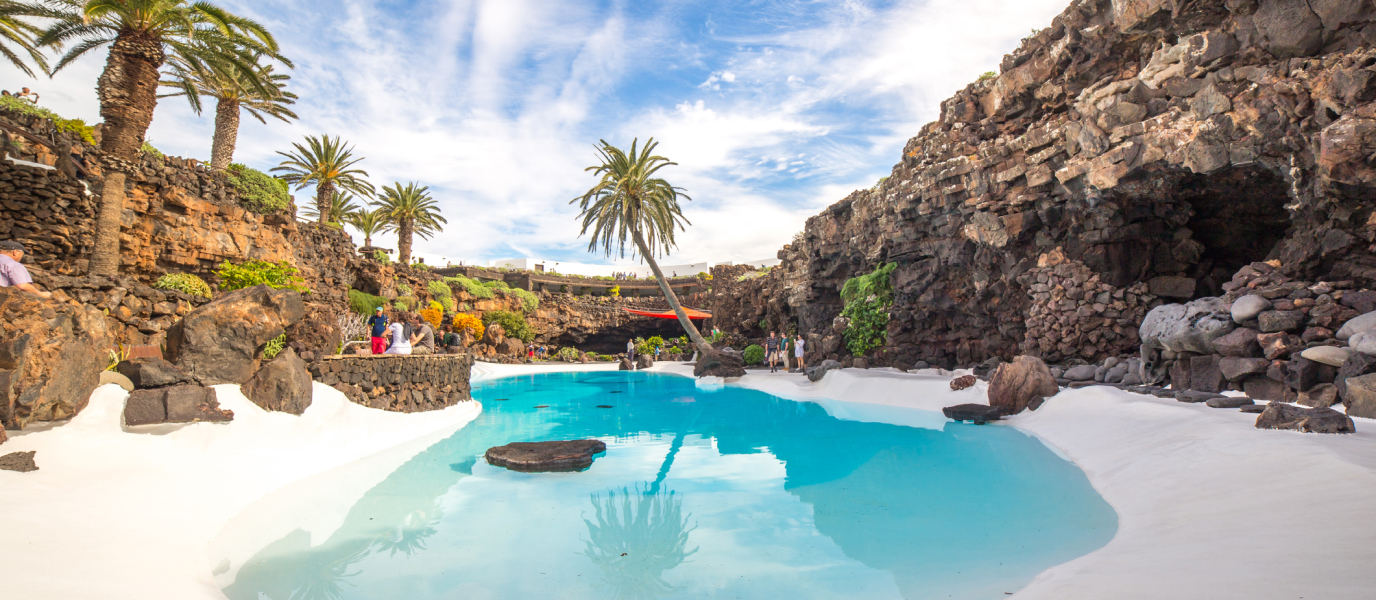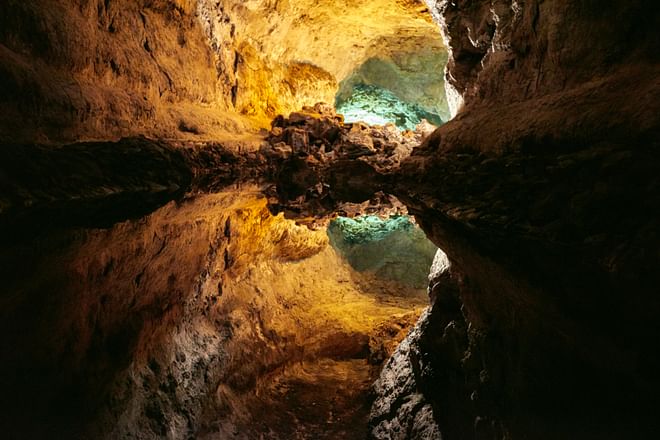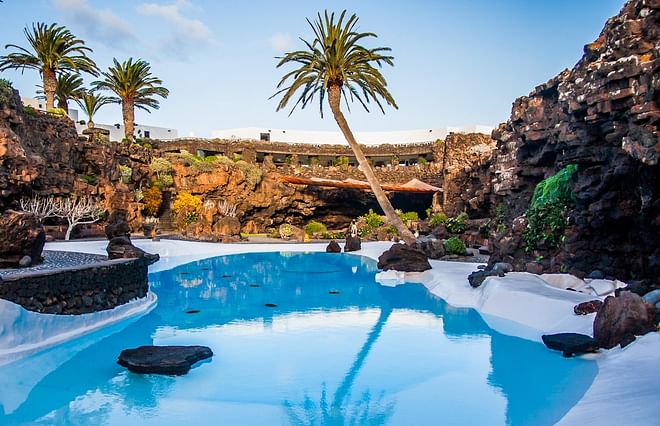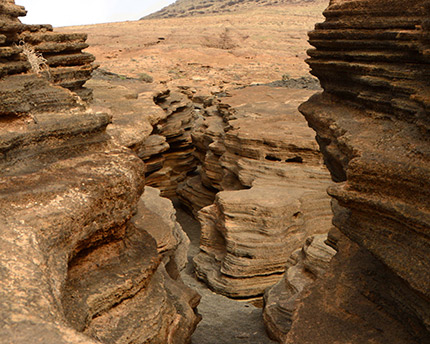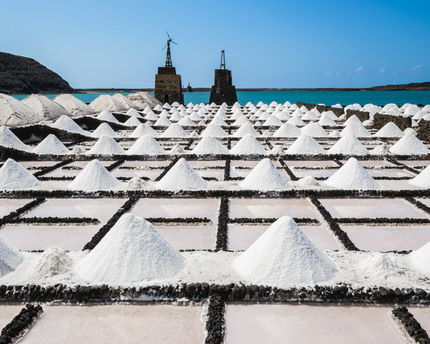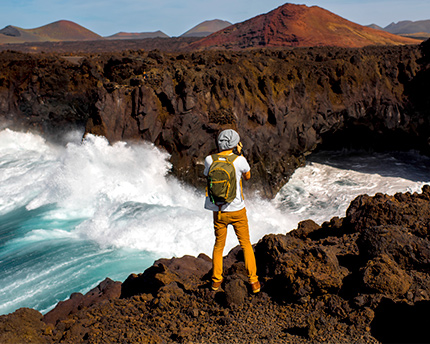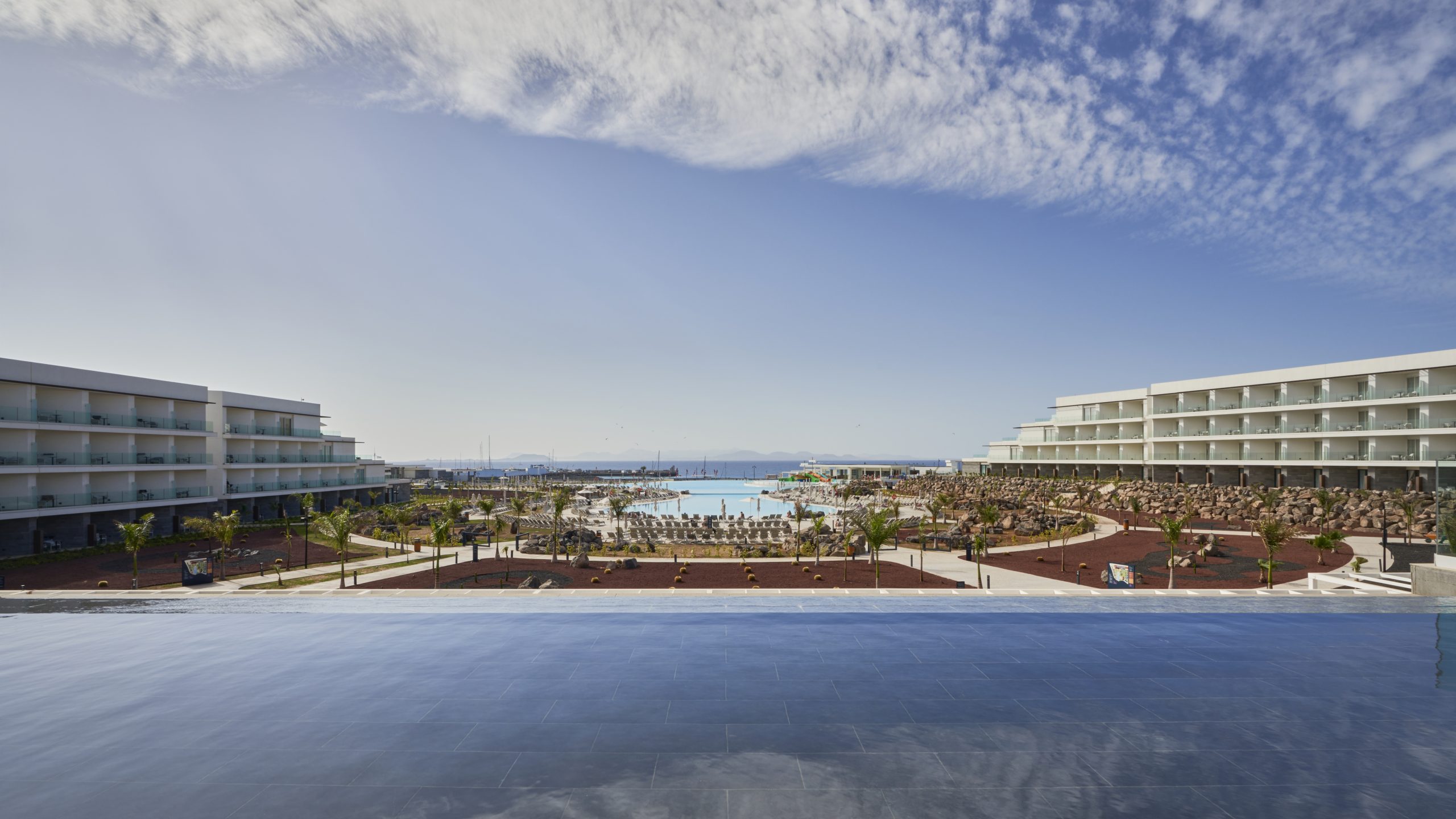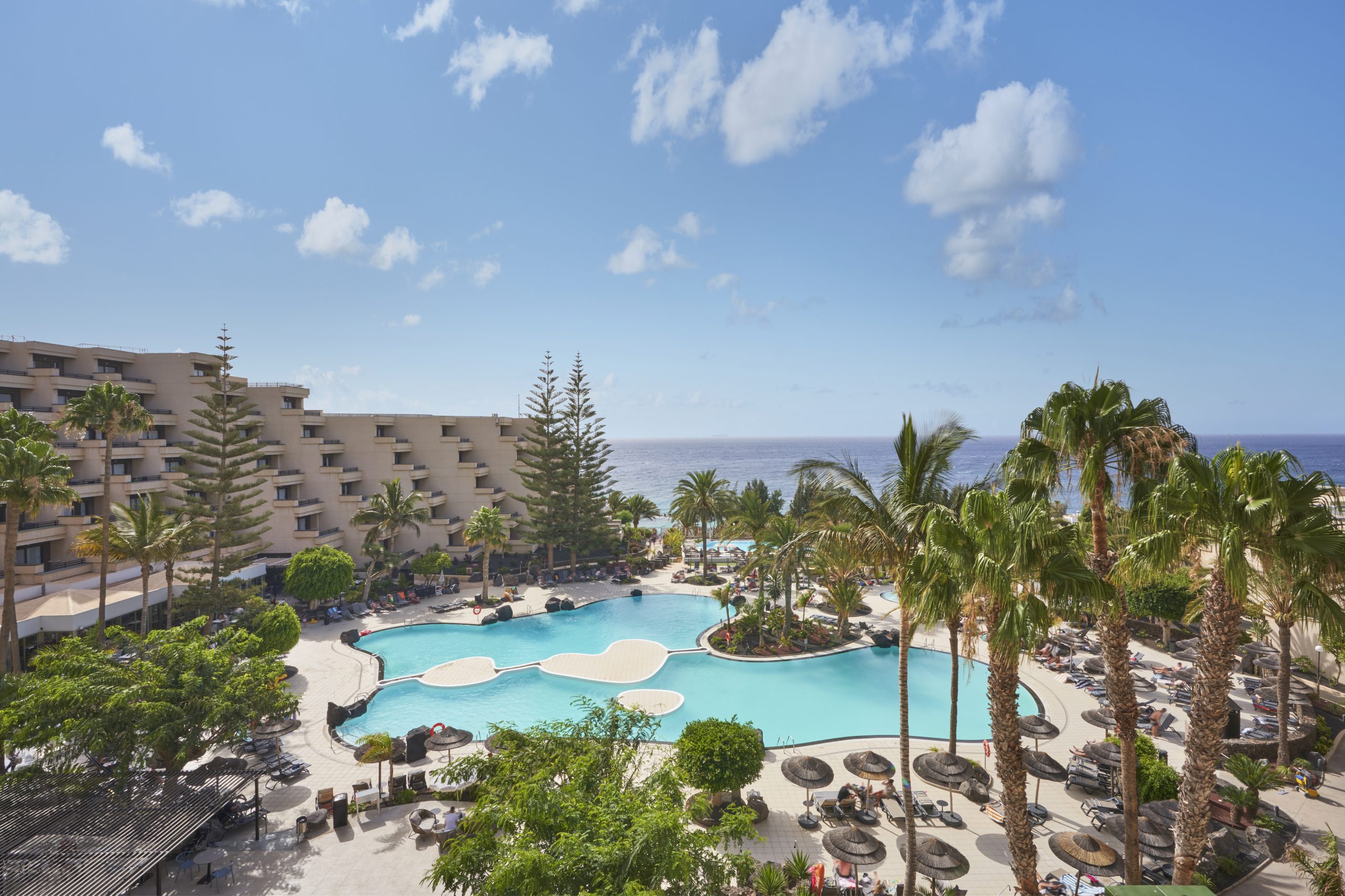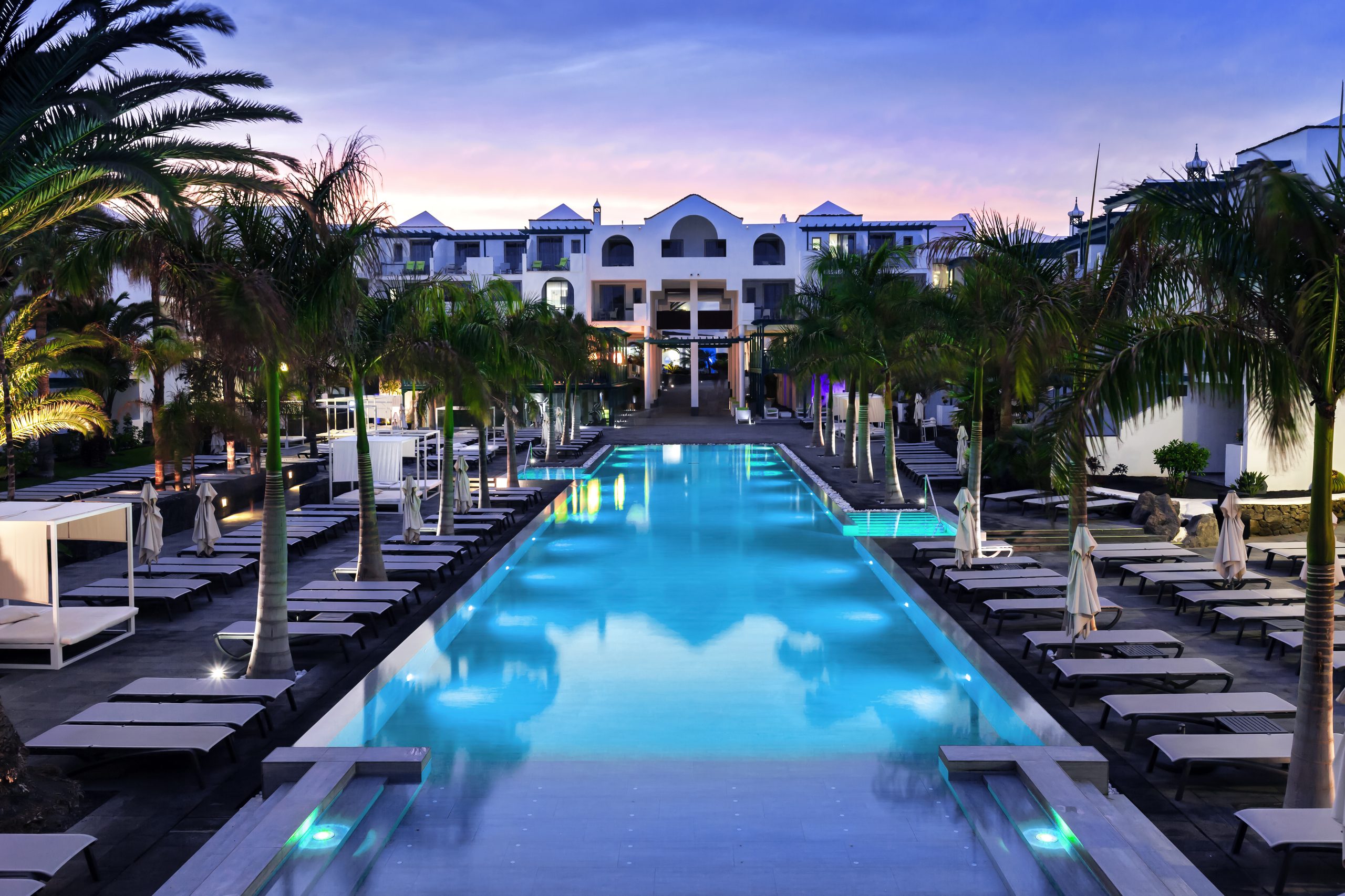The Jameos del Agua was the first Centre of Art, Culture and Tourism created by César Manrique on Lanzarote. The artist’s creative genius and his passion for his native island led him to design a series of remarkable architectural creations from the elements so generously granted to him by Nature.
For this attraction, Manrique focused on the volcanic tunnel formed after the eruption of the Corona Volcano and chose the sections of the tunnel nearer the coast for the creation of the Jameos del Agua. This tunnel, over 6 kilometres in length, extends from the crater of the volcano itself to the sea, and continues for a further kilometre and a half under the sea (this last section is known as the Túnel de la Atlántida). These types of tunnel are not usually as long as this: in fact, this is one of the longest in the world.
The first thing we notice when we hear about the Jameos del Agua is its strange name. The word ‘jameo’ (a word from the original inhabitants) actually means the hollow produced by the collapse of the ceiling of a tunnel formed by volcanic lava, while ‘del agua’ refers to an interior lake, created by water filtering through because the hollow is below sea level. In this installation, which bears the hallmark of Manrique, can be found at least three ‘jameos’: the Jameo Chico (Small Jameo), just after the entrance, the Grande (Large) and the Redondo (Round).
Related experiences
Exploring a geological wonder
Although initially (in 1966) designed as a performance auditorium, the Jameos del Agua now constitute one of the most fascinating attractions Lanzarote has to offer. To best appreciate this installation, it is worth bearing in mind that it is basically a geological phenomenon, but that through the creative genius of César Manrique it can now be enjoyed as another of Lanzarote’s attractions.
A leisurely tour of the Jameos del Agua takes no more than an hour, or perhaps a little more to allow for the host of photogenic nooks and crannies where it is difficult to resist the temptation of a selfie. Families with children to be aware that strollers and buggies are not allowed inside. For very small children, the use of a baby sling is recommended, to allow parents greater freedom of movement.
During your tour of the Jameos del Agua, you will discover awe-inspiring spaces and features such as a natural lake with clear waters, and a barrel vault, resembling a cathedral nave with a hole in the top which allows in what appears to be a remarkable beam of heavenly light. Crossing the bridge from one side of the lake to the other brings you to the Jameo Grande, where a breathtaking garden is filled with imperious-looking plants. The palms, cactus and fig trees appear to watch over the undulating white swimming pool that dominates the space. The green of the plants, the pure white of the pool, the blueness of the water and the blackness of the volcanic rock make for one of the loveliest scenes at the Jameos del Agua. This is one place that leads us to believe that human intervention really can at times make Nature even more beautiful.
If you continue beyond the Jameo Grande, you will come to an impressive auditorium integrated into a volcanic cave. This is a unique place, thanks to its geological characteristics and its acoustic features. Once again, Manrique succeeded in making use of a gift from Nature to offer a gift of his own to the human race.
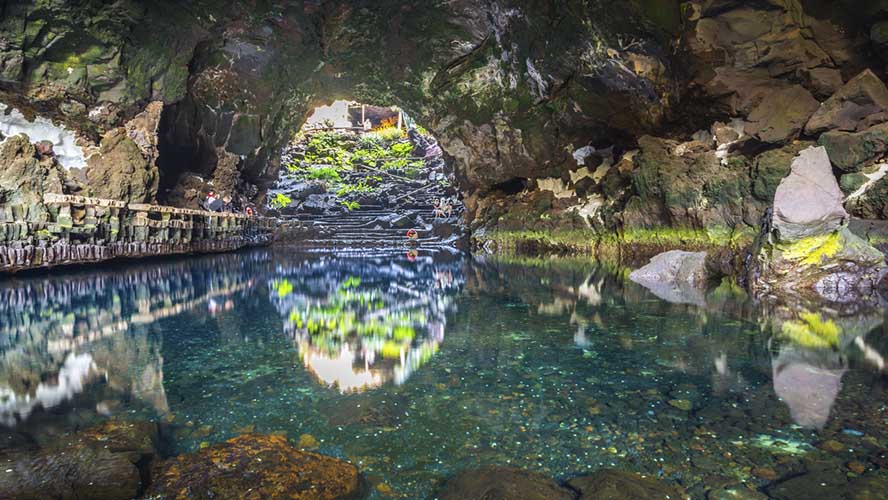
The blind crabs of the Jameos del Agua
Apart from the importance of Lanzarote’s Jameos del Agua as a tourist attraction, the centre is also regarded having a particular ecological significance. This is because the place is home to an endemic species of crabs. Their scientific name is Munidopsis polymorpha, and they are very small (barely a centimetre across), albino and blind. These tiny arthropods are very sensitive to changes in their environment, and they are affected by sound, light and rust, which is why throwing coins into the water is prohibited. The temptation to make a wish can be very strong, but in this particular instance, it is best resisted.
Other things to see in Lanzarote
The Jameos del Agua belong to the Island Council’s series of Centres of Art, Culture and Tourism on Lanzarote. Other exceptionally beautiful centres are the Montañas del Fuego, the Cueva de los Verdes, the Jardín del Cactus, the Monumento al Campesino [Monument to the Farm Worker]—a typical Lanzarote dwelling—and the Mirador del Río. Because of its amazing location, another highly recommended visit is to the Museo Atlántico, an undertaking by the artist Jason deCaires Taylor. The Museum is situated at a depth of 12 metres, in the Bahía de las Coloradas, and covers an area of 2,500 m2.




































































